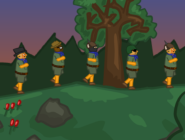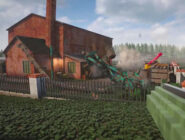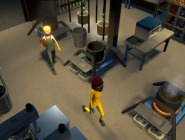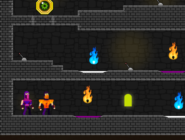Jungle Pokerogue
Advertisement
Advertisement

Jungle Pokerogue is a procedurally generated biome featured in the roguelike fan game PokéRogue. It appears as one of the mid-run environments, usually after the forest biome and just before the temple biome. The jungle is known for its mix of wild Pokémon, varied weather conditions, and the potential to encounter both common and rare species, depending on the player’s decisions and luck. Unlike early biomes, the jungle introduces more evolved forms and opens the door to high-risk, high-reward encounters that can shape the direction of a run.
Biome Transitions and Random Events
The jungle biome does not appear in every run by default. It has a 50% chance of showing up after the forest if the player does not have a map item, but it becomes a guaranteed option when a map is used. Its presence signals a change in pacing, with stronger enemy teams and more unpredictable spawns. Players can expect dry weather in most cases, though there’s a moderate chance of rain, which may influence encounter types and move interactions. The biome is always followed by the temple, allowing players to plan ahead.
Encounter Variety and Spawn Tiers
Jungle Pokerogue includes a wide range of wild Pokémon, divided across several rarity levels. These include:
- Common: spinarak, blitzle, sewaddle, purrloin, cherubi, and more
- Uncommon: tropius, joltik, lurantis, pangoro, komala
- Rare: scyther, grookey line, snivy line, yanma
- Boss and ultra-rare: tapu lele, zarude, buzzwole, munkidori
- Special evolutions and new forms: kleavor, rapidash, kangaskhan
These spawns can appear solo or in groups, with later waves increasing the chances of evolved or rare encounters. The biome’s spawn pool gives access to strong support moves, offensive abilities, and type combinations not common in earlier zones.
Environmental Features and Strategy Tips
Jungle comes with its own tactical challenges. The weather may trigger passive effects, status changes, or modify accuracy. Without a map, its appearance adds unpredictability to the route, but that randomness can bring powerful opportunities. Luck and item use affect encounter quality, while certain Pokémon are more likely to appear under specific biome conditions. Jungle also serves as a reset point, where HP and status conditions are fully restored after the 10-wave cycle, allowing teams to recover before the temple biome.
To get the most out of the jungle biome:
- Save map items for when you want to guarantee jungle access
- Use rain-based effects to your advantage, especially with Grass or Bug types
- Watch for status-heavy Pokémon like foongus and shroomish early on
- Capture setup-oriented Pokémon for long-term support
- Prepare your team for stronger opposition in the temple biome ahead
Progression and Mid-Game Significance
Jungle Pokerogue functions as a turning point within a standard run. It offers more flexibility than earlier zones and introduces mechanics that hint at future biome challenges. The variety of wild Pokémon makes it ideal for filling gaps in a player’s team, whether through bulk, speed, or utility. Players who understand the biome’s layout and plan accordingly can use it to build momentum going into the more dangerous areas that follow.
Related games
Comments















